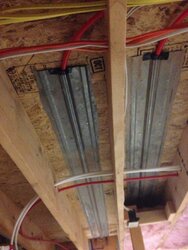Fred61
Minister of Fire
I assume the plates are fully annealed. That's what keeps them quiet and also allows you to easily form them. I tried my air stapler and was shooting the staple clean through. I ended up using a cheap electric stapler I bought at the local Ace store.Wonder if an air stapler and pointed sstaples will do the trick...
Last edited:


